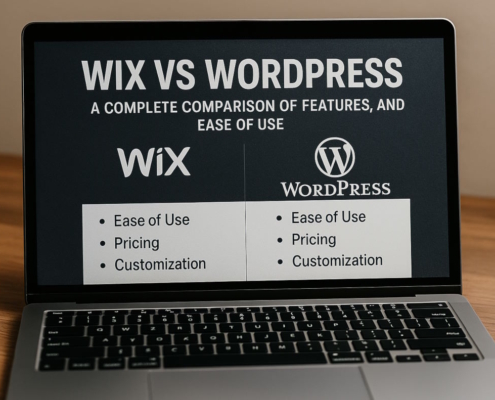What does a business plan do?
The purpose of a business plan is to describe your company’s activities, how it makes money, and the people who buy from it. Your internal goals and objectives may be better articulated and organized with the aid of a well-written business plan. By sharing it with prospective lenders and investors, you can demonstrate that you are making progress.
Because they are dynamic documents, business plans may and should evolve as needed. As new companies learn more about their target market and the goods and services that appeal to them, they may revise their original business strategies. Companies that have been around for a while may simply review their strategy every few years. Before you ask for a business loan, you should review this document, no matter how old your business is.
- Executive summary
The business plan’s executive summary should be the first section. In it, you should lay out the goals you have for your company. The Small Business Administration recommends saving this piece for last as it serves to summarize the remainder of the strategy.
An engaging executive summary is hard to put down. Included are the company’s goals and a brief overview of their products and services. Include specifics on your background in the field you’re planning to join and give a brief explanation of why you’re launching your business.
- Business description
The next part is the description of your business. Included in this should be the most fundamental details, such as:
- Company name
- Business address
- Names of prominent persons in the business. Ensure that you emphasize the exceptional abilities or technical knowledge each team member possesses.
In addition to stating whether your firm is a sole proprietorship, partnership, or corporation, your business description should detail the ownership percentages and levels of engagement for each owner.
Finally, describe your company’s background and the services you offer. The reader is now ready to hear about your objectives in the part that follows.
- Goals of the business
A statement of goals is the third component of a business plan. In this part, you can lay down your goals for the next several months and years.
In this part, you can outline your goals for the company’s future and how the funding will help you reach those goals if you’re seeking a business loan or investment from outside sources. Giving the lender a detailed description of the opportunities your company offers is crucial.
If your firm is expanding into new product lines, for instance, you should detail how the loan would facilitate the launch of those lines of business and the projected sales growth over the following three years.
- Description of services and goods
Provide a comprehensive description of your offerings (both current and future) in this part. Make sure you incorporate the following:
- Detailed instructions on how to use your service or product.
- Your service’s or product’s price structure.
- The average people who use your services.
- The plan for managing your inventory and fulfilling customer orders.
- Discuss any trademarks or patents that are related to your product or service, whether they are existing or pending.
- Analysis of the market
Here is your chance to demonstrate that you have an extensive knowledge of the business and the market you intend to join. In this section, you will include statistics and data that analyze industry trends and themes to back up the claims you made about your organization in your description. Provide examples of what other companies are doing and the results they’re getting.
Visualizing your target clients is another important part of your market study. Among other things, this includes their income level, purchasing patterns, and the services they need and require. Financials should primarily serve to demonstrate how your company may improve upon the competition.
- A Look at the Competition
In a well-written business plan, you should highlight how your company stacks up against both direct and indirect rivals. Analyzing their strengths and shortcomings is a great way to demonstrate your industry expertise. Demonstrating how your firm will compare is your ultimate objective. Here is where you should be honest about everything that would make you think twice about entering the market, such as expensive start-up fees. You should include your competition analysis in the market analysis part of your paper.
- Organizational and Management Overview
The structure of your company should also be detailed in your business plan. Provide an overview of your company’s management team’s experience and key tasks here. Making a graphic showing your command structure might be a useful tool.
Be sure to specify the legal form your company will take, whether it’s a partnership, sole proprietorship, or some other arrangement. You will need to name the people who are on your board of directors.
- Sales and marketing plan
This is the place to talk about your strategies for getting people to buy your products or become loyal consumers who will buy from you again and again. Specify how you want to sell and distribute your products, and how much it will cost to do so.
- Financial overview
As a new company, you probably don’t have a ton of data on your finances just yet. If your firm is already up and running, though, you should also include a cash flow statement detailing the inflow and outflow of cash as well as a balance sheet detailing your assets and liabilities.
You could get these reports automatically from your accounting program. It could also help you figure out things like:
Your net profit margin — the proportion of sales that remain after deducting all expenses.
The current ratio — the measure of a company’s liquidity and its capacity to pay back loans.
The accounts receivable turnover ratio — a metric that quantifies the annual collection frequency of receivables.
Here is an excellent spot to use visual aids that help readers grasp your company’s financial status, such as charts and graphs.
- Budget estimates
Including this in your company strategy is essential if you want to attract investors and funding. It lays out the steps you’ll take to make a respectable profit for investors or to pay back the debt.
For a minimum of three years, you will need to project your company’s revenue, expenditures, and profit. The projections for the future years will be based on the assumption that you have secured a new loan.
Before making any predictions, make sure you thoroughly examine your previous financial accounts. Though ambitious, your objectives should not be unrealistic.
- Funding Request
If you’re in need of financial backing, this part is where you lay out your plans for using the funds and the total amount you’ll need to launch the company. Additional financing may be necessary to finish other essential projects, therefore it could be helpful to put a timeframe here.
- Appendix
Lastly, provide any supplementary resources or information that you were unable to include elsewhere. That might involve things like:
- Permits and licenses
- Patents
- Contracts
- Equipment leases
- Bank statements
If you are applying for a loan, specifics on your personal and company credit are required.
It could be helpful to provide a table of contents at the start of this section if the appendix is extensive.
Helpful hints and resources for business plans
If you want your business plan to be thorough and persuasive, follow these guidelines:
Do not be overly optimistic in your company plan whether you are seeking a professional investment, a bank loan, or both. Your approval prospects will take a hit if you provide sales projections that are too optimistic.
Be sure to proofread your work before submitting it to lenders or investors. Mistakes in grammar, spelling, or punctuation might provide a negative impression. If you’re not great with words, it can be wise to get a professional to develop your business plan, edit your copy, or proofread your work.
Making use of no-cost resources. A vast network of volunteer business mentors and specialists are available via the nonprofit organization SCORE to assist you in creating or revising your business plan. You may also get free advice and assistance with writing a business plan from one of the many Small Business Development Centers run by the U.S. Small Business Administration.






























